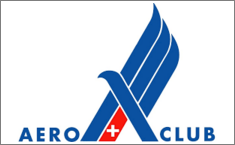Safety II: a significant increase in flight safety for Melle airfield
Methods and results of the FLYTOP club course
for the FLYTOP team: Barbara Hofer, Herber Lehner and Prof Dr. Alfred Utsch
The two clubs based at the Melle airfield, SFC Melle Grönegau and Aero Club Bünde, have so far tried to do their utmost to prevent accidents while flying (flight safety). Above all, this included good training, cautious, defensive behaviour and compliance with all rules, regulations and laws. Safety science experts refer to these methods as "Safety I" or reactive, static flight safety. In addition, so-called trust pilots were introduced. They have launched a reporting system in which pilots can report incidents or other safety-threatening events. They regularly issued a security bulletin. According to Safety Science, it is unfortunately to be expected with such reporting systems in air sports: after an initial good start, very few reports are received. The trusted pilots, and in particular their spokesman Dieter Kammann, became aware that with all these measures, the Melle airfield would remain at the current risk level of gliding / powered flight in air sports. If the starting figures of the Federal Statistical Office are combined with the accident figures of the BFU, the following risk figures are obtained:
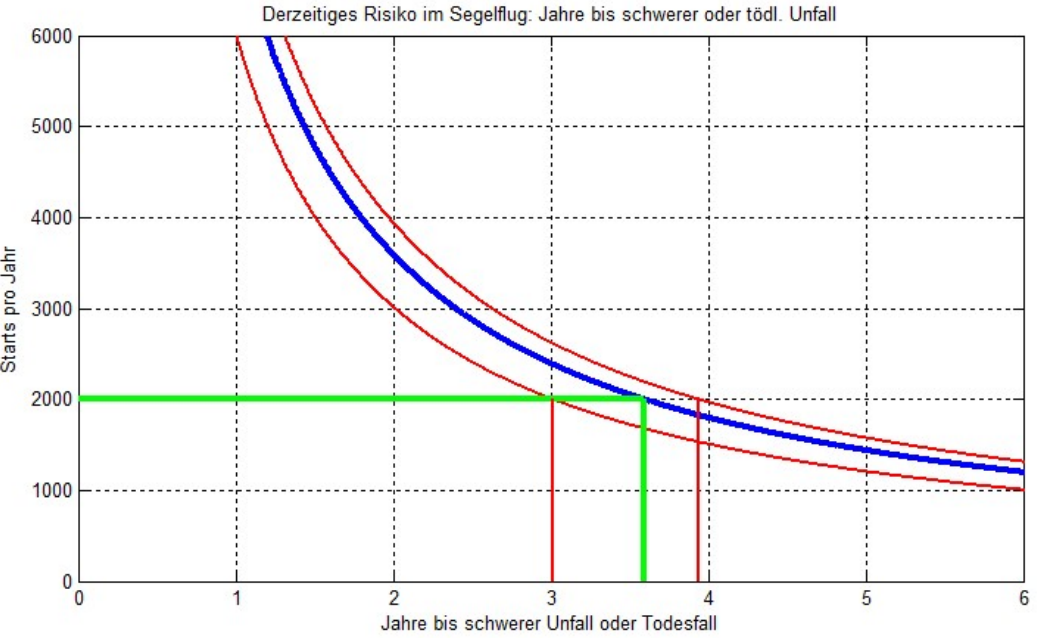
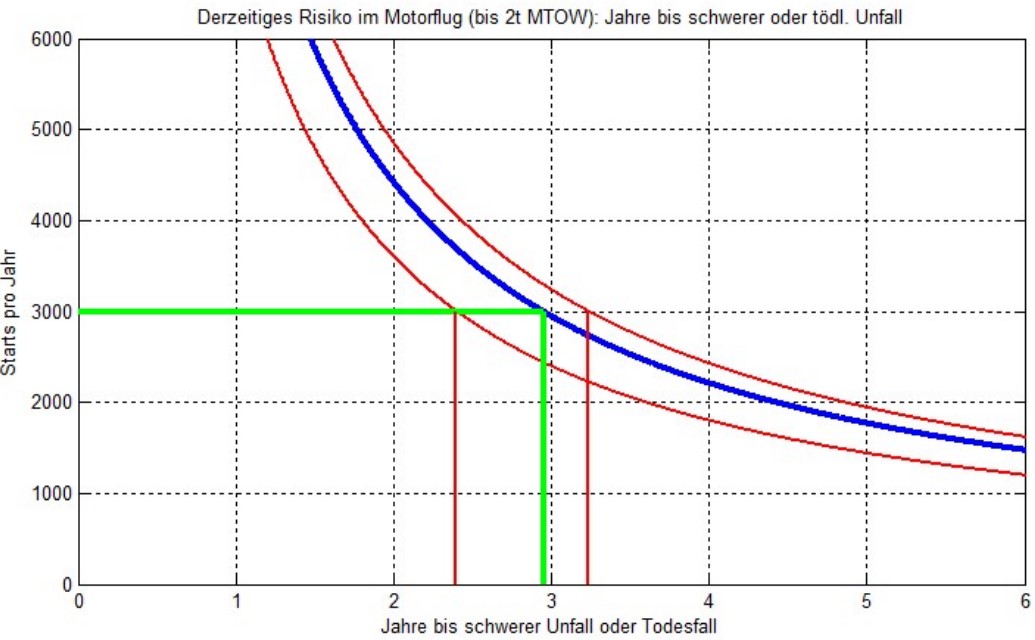
This means that, statistically, an accident can be expected every 3 years at Melle airfield. The safety team did not want to accept this and looked for ways to improve. In fact, there is an approach that can be expected to significantly reduce risk by at least a factor of 10 in powered and gliding flight: the introduction of the Safety II safety method. Safety II was developed by commercial aviation and introduced worldwide with the decision of the International Civil Aviation Organization (ICAO) in 2013 for all organizations operating aviation [1]. In gliding, it has already been proven that the methods of Safety II can also significantly reduce the risk in air sports [2].
In the search for ways to introduce Safety II for the clubs, flight schools and private aircraft owners in Melle, the Safety Team became aware of the FLYTOP course system by Prof. Dr. Alfred Ultsch. In 2022, FLYTOP received the Aviation Safety Award from the International Scientific and Technical Soaring Organisation (OSTV) [3]. In particular, it offers training for clubs that can be used to improve safety in the long term. However, since the safety culture of these organisations has to be changed in the direction of flight safety, it is a prerequisite for the courses that as many pilots as possible take part in such club training. FLYTOP club courses can only take place if at least 80% of the pilots of the respective organization and also 98% of the officials (board members, flight instructors, etc.) participate. If these numbers are not reached, the training will not take place.
On 18.3.2023 the time had come. Through intensive persuasion by the safety team, it was possible to achieve the required number of participants, so that a training with more than 100 pilots, flight instructors and student pilots was achieved. An essential method of Safety II is the introduction of a safety management system (SMS). The course guided the participants through a work cycle of such an SMS in individual, well-structured group work and tasks for self-processing. First, the participants learned how an active, planned and structured search for safety-relevant observations (SRB) can take place in Melle. All the pilots set out to find the defects in the safety nets = holes in the cheese slices in James Reason's safety model.
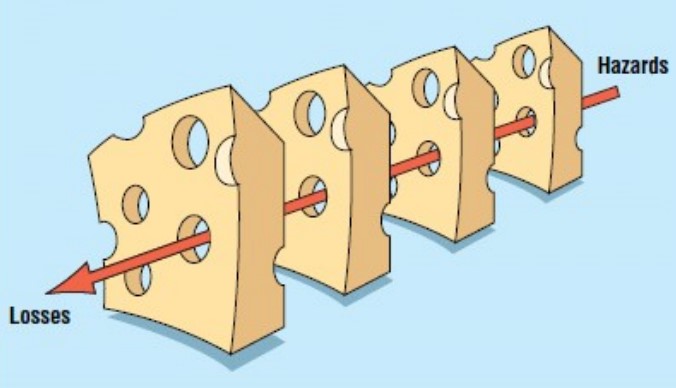
Calculations by safety science show that, in order to achieve the above-mentioned risk, there are statistically more than 2000 such holes in the security system in Melle. Empirical observations in more than 50 FLYTOP training courses have shown that, under the expert guidance of trained safety coaches, an organization can ideally find as many holes in the cheese slices in a flying season as equivalent to 10% of the season's take-offs. Under the guidance of the FLYTOP team, Barbara Hofer, Herbert Lehner and Alfred Ultsch, 320 holes were found in Melle. This corresponds to about 6% of the annual number of starters and is to be regarded as a result in the good midfield. See the left blue dot in the picture "Safety at Melle Airfield". The active and professionally planned and executed search for SRB is only the first step in an SMS. The next important step is to derive concrete projects from these SRBs, which can also measurably improve safety. Among such projects – in the cheese slice model "lid on holes". is a safety-enhancing measure at the airfield, which is equipped with a project manager, employees, a schedule and controllers during the FLYTOP course. Very good organizations manage to launch more than 10 such safety projects every year, which can measurably increase flight safety at the airfield. FLYTOP's safety coaches were able to get 16 such projects off the ground. In particular, pilots could be recruited for the work on these projects who do not already hold functions in the association, such as board members, flight instructors or trusted pilots.
These two key figures (Key Safety Performance Indicators) can be used to measure how the safety measures at Melle Airport are to be assessed. As you can see from the picture below, if the projects are actually implemented, a very good level can be achieved with the first SMS work cycle in Melle.
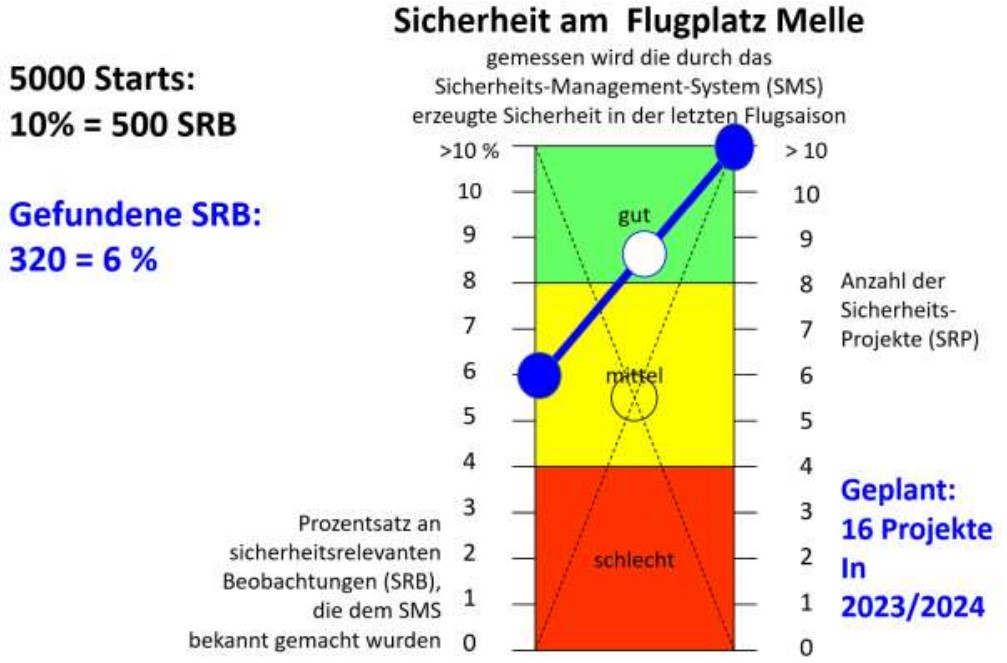
Safety science findings have shown that a central and important element of the safety culture is the interaction with each other (Crew Resource Management CRM) and the human factor (Human Factor). The safety coaches from FLYTOP have trained the pilots in communication as well as CRM and HF. An important training objective is the handling of errors (HF). Safety II accepts that pilots will always make mistakes despite the best training and extreme effort. How to use these errors in such a way that they serve to improve the safety nets, and thus to be regarded as a safety resource, has been learned in practice.
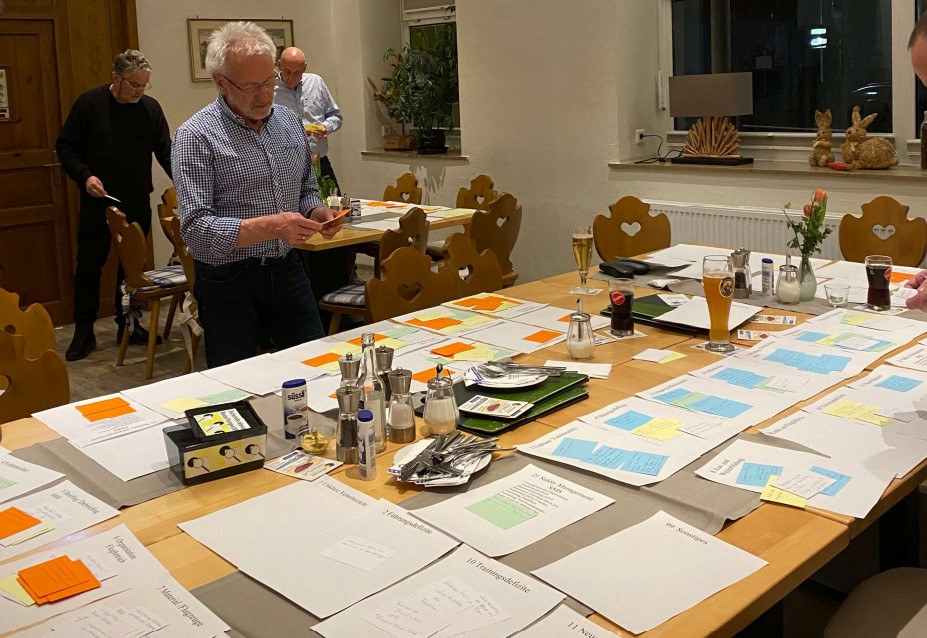
CRM for Air Sports
Crew Resource Management (CRM) is one of the key methods of Safety II in commercial aviation. What can crew resource management be for pilots who mostly sit alone in gliders, UL or powered aircraft? CRM means that the pilot in Command should use the input and help of his crew in particular. In air sports, the "crew" is also to be understood as the club mates. Thus, in air sports, Crew Resource Management becomes Club Resource Management (CRM). CRM brings an increase in flight safety when pilots are trained in the so-called non-technical skills. If it is right in the interpersonal area, flight safety can be significantly improved. Hasn't everyone ever told a club mate that it would be better not to fly today, because with so much professional stress, only half a brain is available for the flight task. Or the other way around: if things are not right in the club, if you just have to be annoyed or even argue at the airport, this clearly leads to a reduction in flight safety.
For this purpose, the FLYTOP training uses a sequence of group work that builds on each other, in which more and more interpersonal communication, cooperation, leadership behavior and decision-making are practiced. As a "side effect", the participants worked productively with people they hardly knew before the training. It became clear to the participants that good cooperation between and within the clubs can lead to an increase in flight safety that can be put into practice.
Sustainability
In order to improve flight safety not only on one training day, but sustainably in Melle, it was decided at the training to design a basic flight safety program for the airfield. This is to be accepted as binding by the general meetings of all clubs and all private pilots. In order to introduce and operate a Safety II in Melle on a permanent basis, the Melle airfield will have a team of about 5 pilots trained as safety coaches. This training includes approximately 100 hours of training in aviation safety. In order for the work of the safety coaches to be understood, accepted and implemented in the club, it was agreed to have the flight instructors in Melle and the club officials trained in Safety II. For the flight instructors, it is planned to incorporate this as part of their mandatory further training in the state association in autumn 2023. The Safety Coaches start their training with online lessons at FLYTOP.
As a follow-up project for the jointly developed first SMS work cycle, a "safety event" was agreed before the start of the 2024 season. The FLYTOP team has agreed to accompany this "safety event" in the background, which will take place under the direction of the trained safety coaches from Melle.
___________________________________
[1] Safety Management, Annex 19 to the Convention on International Civil Aviation, firs Edition, July 2013
[2] Swenson, H. : The FLYSAFE project in Sweden, proc. OSTIV Safety Conference, Wasserkuppe, 2017
[3] https://ostiv.org/newsdisplay/ostiv-prize-awarded-to-prof-dr-alfred-ultsch.html





